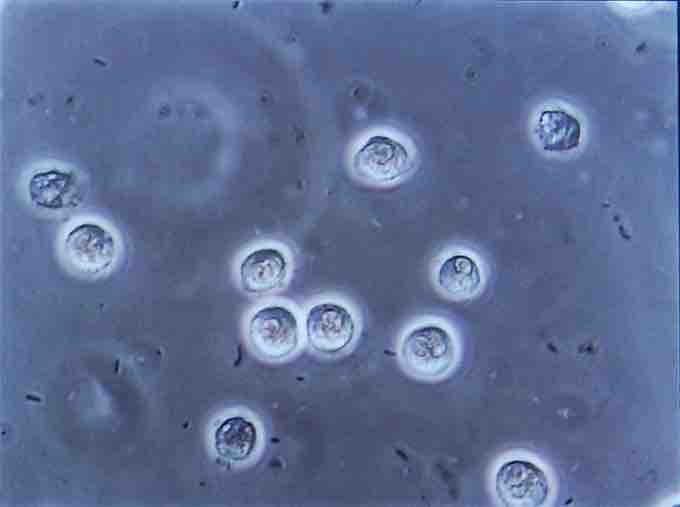About 150 million people develop a urinary tract infection each year. They are more common in women than men. In women, they are the most common form of bacterial infection. Up to 10% of women have a urinary tract infection in a given year and half of women having at least one infection at some point in their lives. They occur most frequently between the ages of 16 and 35 years. Recurrences are common. Urinary tract infections have been described since ancient times with the first documented description in the Ebers Papyrus dated to c. 1550 BC.
A urinary tract infection (UTI) is an infection that affects part of the urinary tract. When it affects the lower urinary tract it is known as a bladder infection (cystitis); when it affects the upper urinary tract it is known as kidney infection (pyelonephritis). Symptoms from a lower urinary tract include pain with urination, frequent urination, and feeling the need to urinate despite having an empty bladder. Symptoms of a kidney infection include fever and flank pain usually in addition to the symptoms of a lower UTI. Rarely the urine may appear bloody. In the very old and the very young, symptoms may be vague or non-specific.
The most common cause of infection is Escherichia coli, though other bacteria or fungi may rarely be the cause. Risk factors include female anatomy, sexual intercourse, diabetes, obesity, and family history. Although sexual intercourse is a risk factor, UTIs are not classified as sexually transmitted infections (STIs). Kidney infection, if it occurs, usually follows a bladder infection but may also result from a blood-borne infection. Diagnosis in young healthy women can be based on symptoms alone. In those with vague symptoms, diagnosis can be difficult because bacteria may be present without there being an infection. In complicated cases or if treatment fails, a urine culture may be useful.
Categories of UTI
Uncomplicated UTIs
In uncomplicated cases, a diagnosis may be made and treatment given based on symptoms alone without further laboratory confirmation, and treatment involves a short course of antibiotics such as nitrofurantoin or trimethoprim / sulfamethoxazole. Resistance to many of the antibiotics used to treat this condition is increasing.
Complicated UTIs
In complicated cases, it may be useful to confirm the diagnosis via urinalysis, looking for the presence of urinary nitrites, white blood cells (leukocytes), or leukocyte esterase. Another test, urine microscopy, looks for the presence of red blood cells, white blood cells, or bacteria. A longer course or intravenous antibiotics may be needed. If symptoms do not improved in two or three days, further diagnostic testing may be needed. Phenazopyridine may help with symptoms. In those who have bacteria or white blood cells in their urine but have no symptoms, antibiotics are generally not needed, although during pregnancy is an exception. In those with frequent infections, a short course of antibiotics may be taken as soon as symptoms begin or long term antibiotics may be used as a preventative measure.

Bacteriuria and Pyuria
Multiple bacilli (rod-shaped bacteria, here shown as black and bean-shaped) shown between white blood cells in urinary microscopy. These changes are indicative of a urinary tract infection.
Lower UTI
Lower urinary tract infection is also referred to as a bladder infection. The most common symptoms are burning with urination and having to urinate frequently (or an urge to urinate) in the absence of vaginal discharge and significant pain. These symptoms may vary from mild to severe and in healthy women last an average of six days. Some pain above the pubic bone or in the lower back may be present.
Upper UTI
People experiencing an upper urinary tract infection, or pyelonephritis, may experience flank pain, fever, or nausea and vomiting in addition to the classic symptoms of a lower urinary tract infection. Rarely the urine may appear bloody or contain visible pus in the urine.
Prevention
A number of measures have not been confirmed to affect UTI frequency including: urinating immediately after intercourse, the type of underwear used, personal hygiene methods used after urinating or defecating, or whether a person typically bathes or showers. There is similarly a lack of evidence surrounding the effect of holding one's urine, tampon use, and douching. In those with frequent urinary tract infections who use spermicide or a diaphragm as a method of contraception, they are advised to use alternative methods. In those with benign prostatic hyperplasia urinating in a sitting position appears to improve bladder emptying which might decrease urinary tract infections in this group.
For those with recurrent infections, taking a short course of antibiotics when each infection occurs is associated with the lowest antibiotic use. A prolonged course of daily antibiotics is also effective. Medications frequently used include nitrofurantoin and trimethoprim/sulfamethoxazole (TMP/SMX). Methenamine is another agent used for this purpose as in the bladder where the acidity is low it produces formaldehyde to which resistance does not develop. Some recommend against prolonged use due to concerns of antibiotic resistance.